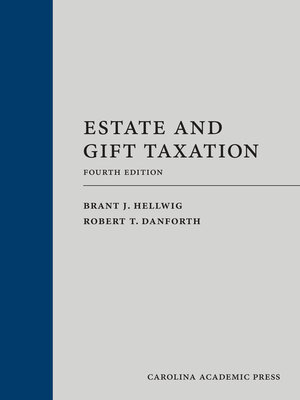
Sign up to save your library
With an OverDrive account, you can save your favorite libraries for at-a-glance information about availability. Find out more about OverDrive accounts.
Find this title in Libby, the library reading app by OverDrive.



Search for a digital library with this title
Title found at these libraries:
| Loading... |
Estate and Gift Taxation, now in its fourth edition, provides teaching materials for a course on the U.S. transfer tax system as it exists following enactment of the Tax Cuts and Jobs Act of 2017. In addition to incorporating pronounced changes to the prevailing levels of the unified credit over recent years, the fourth edition addresses the effect of pending legislative changes (such as the anti-clawback regulations under § 2010) resulting from the sunset of key provisions of the 2017 legislation scheduled to take effect in 2026. The fourth edition also includes coverage of recent regulatory and case law developments since publication of the third edition.
The text opens with an overview of the federal transfer tax regime, one intended to introduce students to the basic structures of the estate tax, gift tax, and generation-skipping transfer (GST) tax. After this introduction, the text proceeds to examine the estate tax and gift tax bases primarily in a context-specific (e.g., life insurance, retained-interest transfers, marital transfers) manner, and the majority of the text is devoted to these topics. The text then transitions to a discussion of the GST tax base and allocation of the GST tax exemption, followed by a discussion of the special valuation rules under Chapter 14 (apart from § 2702, which is addressed earlier in the context of retained-interest transfers). The text closes with a chapter devoted to the application of the U.S. transfer tax regime in the international setting.
The text differs considerably from the traditional casebook format. Critical passages of important cases or rulings generally are limited to excerpts in the overview, and edited opinions of seminal decisions appear on only a handful of occasions. Each chapter closes with a set of sophisticated, practice-oriented problems that require students to spot and resolve issues that would be encountered in an estate planning practice.
The text is structured through 26 discrete chapters, and the chapter headings supply a reasonable course syllabus. While some of the longer or more complicated chapters may require two class sessions, most chapters are intended to be covered in a single class.






